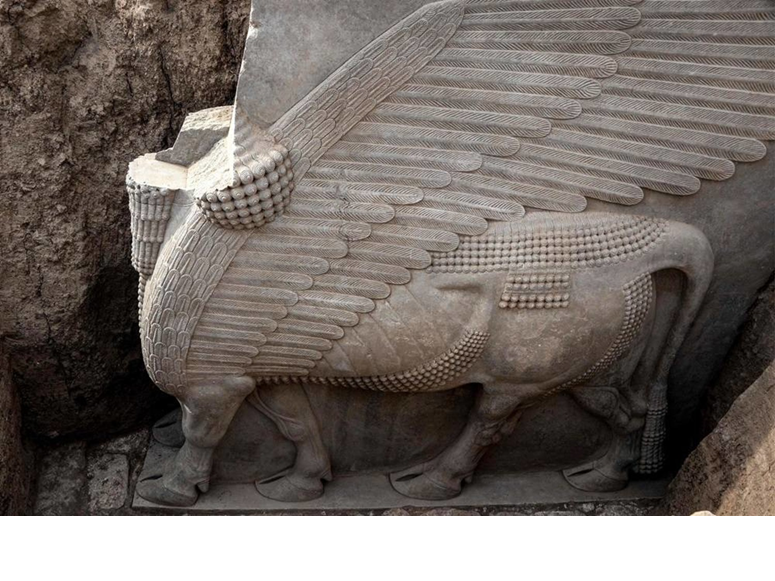A French mission announces the discovery of a 2,700-year-old winged bull in Iraq - Türkiye Monitoring

A French mission announces the discovery of a 2,700-year-old winged bull in Iraq
The statue dates back to the era of the Assyrian king Sargon II, who ruled between 722 and 705 BC, and was at the entrance to the city of Khorsabad, located about 15 km from Mosul in northern Iraq.
An excavation mission led by a French archaeologist discovered a huge winged bull, more than 2,700 years old, known as “Lamasu,” still well preserved, in northern Iraq.
“The attention to artistic detail” in the statue is “amazing,” says Pascal Beauterlan, professor of ancient Near Eastern archeology at the University of Paris 1 Panthéon-Sorbonne, who led an expedition made up of French, European and Iraqi archaeologists.
The carved feathers that form the wings of the statue appear as if they are still new, as do the edges of this creature, “a hybrid between a human and an animal,” as Boutierlan explains to Agence France-Presse.

The only thing missing from the statue is the head, which was “stolen in the 1990s by thieves,” according to Boutierlan. Iraqi security forces found the head cut into pieces, before it ended up in the National Museum in Baghdad.
This “Lamassu” statue is very huge, as it is 3.8 meters wide and 3.9 meters long, and weighs 18 tons. “I have never excavated anything of this size in my life,” Botterlan says, adding, “Normally, we excavate huge pieces like this in Egypt or Cambodia.”
The statue dates back to the era of the Assyrian King Sargon II, who ruled between 722 and 705 BC, and was at the entrance to the city of Khorsabad, located about 15 kilometers from Mosul in northern Iraq.
Boutrolan explains that the winged bull in Mesopotamian beliefs “is part of the beasts that were tamed and placed at the entrances to cities in order to protect them,” adding, “This winged bull is without a doubt one of the last bulls that were built during the era of Khorsabad, before construction stopped.” During the reign of Sargon II.
This statue was mentioned by the French archaeologist Victor Blass in the nineteenth century, and was not documented until the 1990s, when it was “exhumed” for an “emergency intervention” by the Iraqi authorities. At that time, his head was cut off and stolen by thieves.

The story of this winged bull remains present in the contemporary history of Iraq.
In 2014, when the “Islamic State” organization took control of large parts of northern Iraq, the village was deserted of its residents, but they “protected and hid it” well underground before they were displaced.
Source: websites

